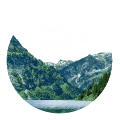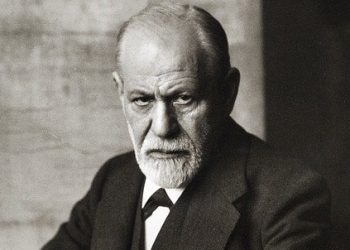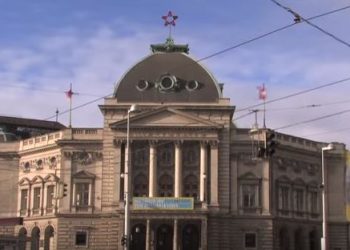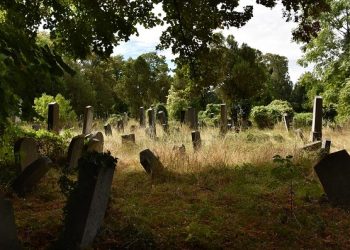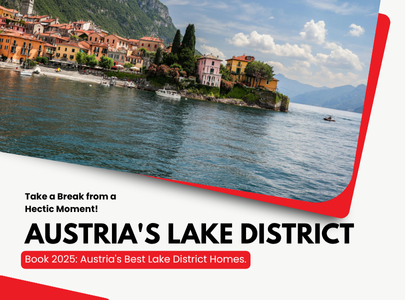This article focuses on the interesting history of St. Stephen’s Square in the heart of Vienna, the story of the ancient cathedral, and its design, both inside and out. You can find more comprehensive information about the attractions in and around the cathedral in the article “St. Stephen’s Cathedral – Attractions and Museums.”
St. Stephen’s Square (Stephansplatz)
If you look at a map of Vienna’s districts, you can see that the first and oldest district of the city is right in its center. At the very heart of this ancient district is St. Stephen’s Square (Stephansplatz in German). This is the square that surrounds the great cathedral, and you will have to pass through it to enter the cathedral.
Two ancient and central streets start from the square: Graben and Kärntner Strasse, which are bustling with luxury shops, restaurants, and cafes. Quite surprisingly, opposite the cathedral, there is a completely modern building called the Haas-Haus, which was built in 1990. Many of the city’s residents were not at all pleased with the construction of the building because, in their opinion, it detracts from the historical charm of the entire area. Despite the opposition, the modern building remains standing and is still used today for a luxury restaurant and offices. For many Viennese, it symbolizes the possibility of harmony between the old and the new.
Right under the square, there is a subway station called Stephansplatz, which makes it easy and quick to reach the heart of the Old City. In 1973, during the construction of the station, the remains of an ancient medieval prayer room were discovered 12 meters below the ground. It is possible that this room served as an ancient burial place or simply as an underground room of the church.
The Stock im Eisen (Trunk in Iron) Sculpture
At the corner of the Palais Equitable, at the edge of the square, encased in glass, there is a unique and ancient sculpture of a tree trunk with hundreds of nails hammered into it. Although there are other sculptures of this type in other cities in Hungary and Romania, this one is the oldest ever found. Its first mention appears as early as 1533.
According to researchers’ hypotheses, blacksmiths and their assistants who were setting out on journeys across the continent would hammer a nail into the tree trunk for good luck and protection. Nailing nails into crosses, stones, and trees to ask for protection and healing from God was a common custom, similar to the practice of throwing coins into a well to make a wish. At that time, nails were considered a sought-after commodity that people did not waste for no reason.
It’s worth passing by the Stock im Eisen sculpture; it is located at the corner where Kärntner Strasse and Graben meet.
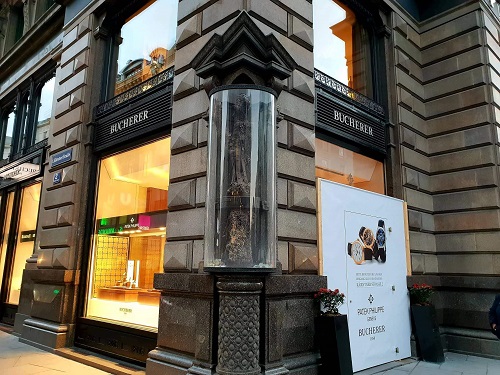
St. Stephen’s Cathedral
St. Stephen’s Cathedral is the main Catholic cathedral of Vienna. The structure is beautifully decorated both outside and inside, and its appearance is most picturesque. Besides its impressive beauty, it is a historical building of paramount importance to the development of the city of Vienna.

The Story of the Cathedral
As early as the mid-12th century AD, Vienna became an important and central city, and the four small churches that existed at that time were not sufficient for the needs of the city’s residents. In 1137, it was decided to build a larger parish church on land that was then outside the city walls. It is likely that the land on which the church was built was part of an ancient Roman cemetery from the 4th century AD, which also had earlier religious structures (even older than Vienna’s oldest church, St. Rupert’s Church, located a few hundred meters from the cathedral).
The original church building was completed in 1160 and designed in the Romanesque style. The church was dedicated to Saint Stephen, who was a Jewish-Christian disciple of Rabban Gamliel the Elder and was executed by the Sanhedrin in 35 AD. Stephen is considered the first Christian martyr.
The original church building was mostly destroyed in 1258 as a result of a large fire, and only its western part and towers remained standing. In 1263, a new and larger church in the same style was built on the site of the destroyed one. The new church included the ancient towers of the original church, which in fact still exist today. In 1304, King Albert I ordered the construction of an addition to the church on its eastern side. The addition was built in the Gothic style and was completed during the reign of Duke Albert II, the king’s son. Duke Rudolph IV, son of Duke Albert II, also continued the expansion of the church and built another section for prayer on the west side of the building. The construction continued from the mid-14th century to the mid-15th century, and by its end, the old and original church was virtually swallowed up within the new church structure. The construction of the south tower was completed in 1433, but the construction of the north tower, which began in 1450, was never completed as planned. The expansion work on the cathedral was completely halted in 1511.
Interesting to Know:
During World War II, the German forces, seeing their imminent defeat, planned to completely destroy the cathedral. The order from the city’s commander was to shell the cathedral and destroy it to its foundations before the arrival of the Soviet soldiers. Fortunately, the officer responsible for carrying out the order did not execute it at all, and the church was only damaged by a fire that broke out in nearby buildings. Due to the fire, the cathedral’s roof collapsed. Renovation work began immediately after the war ended, and the church was restored to its former glory in the early 1950s, reopening to the public in 1952 upon completion of the work.
Today, the church is considered one of the symbols of Vienna and appears in movies, series, and computer games. It is also minted on 10-cent euro coins. The church is active, with prayers held during the week and on Sundays. Musical concerts are also held there.
The Cathedral’s Design: Exterior and Interior
Standing in front of the church, it’s hard to imagine how they actually built it in such an elaborate and special way. The exterior and interior design of the cathedral will leave you in awe of its splendor and magnificence. In this section, you can read a detailed explanation of the different parts of the cathedral.
The Exterior of the Cathedral
The cathedral was built of light-colored limestone, but over the years, the cathedral walls have darkened (due to air pollution and car soot). The building is large – 107 meters long, 40 meters wide, and at its highest point, it rises to a height of 136.7 meters.
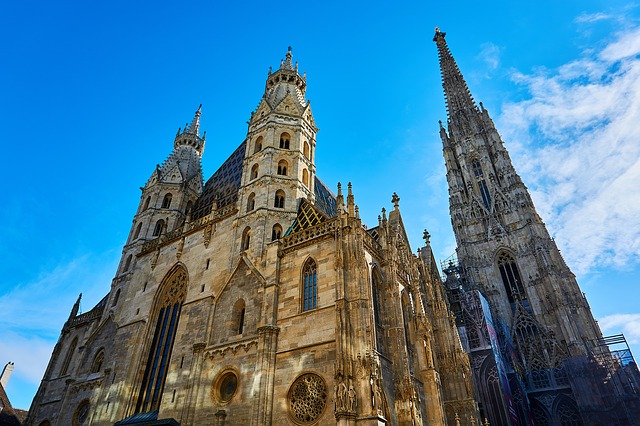
The Cathedral’s Towers
One of the parts of the building that makes it so impressive is the south tower, which rises to a height of 136.7 meters. The locals call the tower “Steffl,” a diminutive of Stephen. The tower’s construction was completed in 65 years (between 1368 and 1433). During the Siege of Vienna in 1529 and the Battle of Vienna in 1683, the tower served as an observation post and defense for the old city walls. At the top of the tower, there is even an apartment for the guards who were stationed there.
The north tower was originally planned to be the same size as the impressive south tower, but this plan proved to be too ambitious. Its construction was never completed as planned, and it rises to a height of only 68 meters.
The Entrance Gate
The main entrance to the church is called the Giant’s Gate (Riesentor in German). According to speculation, this name was given to the gate because in the Middle Ages, a giant mammoth bone hung above it. Above the gate, there is a wall decoration depicting Jesus with winged angels on either side. On both sides of the gate are two Romanesque towers, about 65 meters high. The towers and the Giant’s Gate are the oldest parts of the church.
The Cathedral Roof
One of the things that makes the cathedral so unique is undoubtedly its roof with its colorful and beautiful tiles. The roof is 111 meters long and is covered with 230,000 colorful tiles. The tiles on the south side of the cathedral form an image of a double-headed eagle, which was the symbol of the Austrian Empire and the House of Habsburg. On the north side of the roof, the colorful tiles form the coats of arms of the city of Vienna and the Republic of Austria. The roof of the cathedral is at such an angle that snow hardly covers it, and the rain always ensures that it is clean and polished.
The Cathedral’s Bells
The church has 23 bells, the largest of which is officially named Saint Mary and is located in the north tower. The great bell, weighing 20,130 kilograms, is the second largest in Europe! (After the bell of the Cologne Cathedral in Germany). Some of the bells ring for evening prayers or when there is a funeral, and some ring several times a year, mainly on special occasions like the New Year. All the bells in the cathedral are named after Christian saints.
It is said that Beethoven realized he was completely deaf when he saw birds flying rapidly from the cathedral’s belfry, while he could not hear a thing.
The fire that broke out in 1945 destroyed several bells, and they were replaced in the following years.
The Interior of the Cathedral
The interior design of the church is no less impressive than its exterior. The large prayer hall, decorated with ancient chandeliers, marble columns, and statues, is truly special and beautiful. You can enter the part of the prayer hall closest to the entrance without paying. In the inner part, you can see the altars, the pulpit, the chapels, the memorials, and the catacombs (burial chambers).
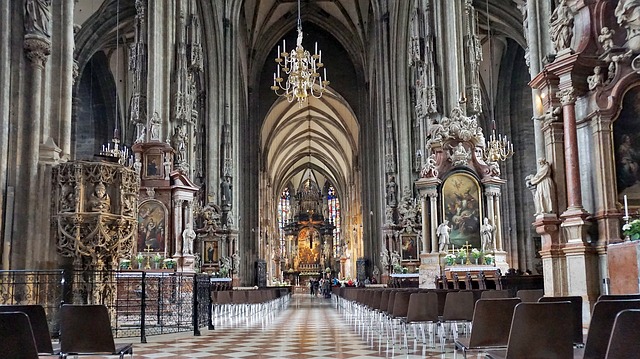
The Altars in the Church
The main prayer hall contains 18 altars, the most famous of which are the High Altar and the Wiener Neustädter Altar. The High Altar is located in the innermost part of the prayer hall. The altar was built in the 17th century and is made entirely of marble. The altar’s decorations depict the story of the stoning of Saint Stephen, after whom the cathedral is named.
The second altar, the “Wiener Neustadt” altar, is located near the High Altar. This altar was in a monastery in the city south of Vienna called Wiener Neustadt and was only moved to St. Stephen’s Cathedral in 1885. The altar is decorated with several paintings on multiple panels that are attached to each other, depicting 72 saints from the Christian world.
The Pulpit
In the center of the prayer hall is the pulpit, designed in the Gothic style. The pulpit is decorated with Christian symbols of saints and animals symbolizing the struggle of good against evil. The pulpit is undoubtedly a work of art and stone sculpture of the highest level.
The Chapels and Memorials
Along the prayer hall, there are 6 decorated chapels dedicated to various Christian saints. You can enter and see the chapels of St. Catherine, St. Barbara, St. Valentine, and St. Bartholomew.
The Tombs and Catacombs – Burial Chambers
As mentioned above, the cathedral was built in an area where there was an ancient cemetery from the Roman period. In addition, the church served as a burial place for the high and mighty. It was a great honor to be buried in the church and to be close to Christian saints. Inside the church, you can see the tombs of some of Austria’s rulers, Prince Eugene of Savoy, and the Holy Roman Emperor Frederick III. The tombs are stunningly beautiful and exquisitely decorated, and their construction took many years. In the church’s crypts are buried bishops, dukes, and others who held important positions in the empire.
Adjacent to the main prayer hall are burial chambers, catacombs, which were in use until 1783. The bones of 11,000 people are in these burial chambers.
Curious to know what attractions and museums are in the vicinity of the cathedral? Read more in our comprehensive article “St. Stephen’s Cathedral – Attractions and Museums.”

